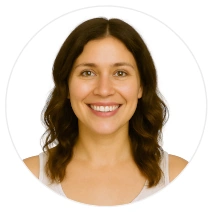
Hello, my name is Stacey Bee experienced research analyst. I specialize in hairbrushes for adults with over 30 years experience. As we get older, our hair changes and so do our hairbrushes needs. What worked while we were young may not work as we get older. For than 30 years I have researched and tested hundreds of hairbrushes and contributed to just as many or more hairbrushes articles. I am about providing sound advice to help people look their best.
At HairBrushy.com, we specialize in hairbrush education because the right brush isn’t just a tool, it’s a daily companion. We focus on boar bristle brushes, paddle brushes, vented styles, round brushes, hot tools, and hairbrush straighteners. Every article here is written with purpose, backed by years of product testing, and grounded in helping you get the most value and performance from your hair tools.
Our content is here to inform, guide, and empower. You’ll find sound advice drawn from hands-on testing and professional hairstylist insight. Whether you’re selecting your first boar bristle brush or trying to find the best styling tool for aging, thinning, or changing hair there’s something here for you. Our mission is to help you look and feel your best, no matter your hair type or stage in life.
Mastering the Art of Blow-Drying: A Guide to Using Hairbrushes for Salon-Quality Styles
Let’s be honest trying to recreate that salon-fresh blowout at home can be more frustrating than fabulous. Over the years, I’ve worked with hundreds of brushes and blow dryers, and I can tell you: it’s not just about the tools, it’s about technique. And as we age, our hair becomes more delicate and requires a little more care and strategy to get that polished look without added stress.
This guide is designed to take the guesswork out of blow-drying. I’ll walk you through how to use different types of brushes in tandem with your blow dryer to style your hair effectively whether you’re working with curls, waves, or straight strands. We’ll cover everything from brush types and sizes to tension techniques and styling tips tailored for mature hair.
So let’s explore how the right tools and techniques can make your blow-dry sessions smoother, more effective, and easier on your hair over time.
The Importance of the Right Tools
Choosing a Blow Dryer
The right blow dryer does more than dry your hair it helps protect it. Look for one with multiple heat settings, especially a cooler option, to avoid excess heat exposure. As hair gets finer or more fragile, a high-heat setting can do more harm than good. A lightweight model with good airflow can give you better control while minimizing strain on your arms and wrists.
Selecting the Right Hairbrush
Not all brushes are created equal. Some are designed to add lift and volume, while others are made for smoothing or detangling. Knowing which brush best suits your hair texture and your styling goal can make all the difference especially if your hair has become thinner, drier, or more sensitive with time.
Blow-Drying by Hair Type
Curly Hair
Curly hair needs a gentle touch. I recommend using a diffuser with your blow dryer to keep the curl pattern intact and reduce frizz. Pair this with a round brush that has natural bristles if you’re aiming for volume or soft curl shaping. Always apply a leave-in conditioner or heat protectant before you start.
Straight Hair
If you have straight hair and want to maintain that sleek finish, a paddle brush is ideal. It helps apply even tension and smooths hair from root to tip. Aim the blow dryer down the hair shaft to close the cuticle and boost shine.
Wavy Hair
Wavy hair benefits from a vented brush. It allows air to circulate more freely, which speeds up drying and helps maintain soft waves. Stick to a medium heat setting and avoid over-drying, which can cause frizz and dullness.
Tools of the Trade: Best Brushes for Blow-Drying
- Round Brushes: Excellent for adding volume and shaping the ends. Great for shorter hair or styles with body.
- Paddle Brushes: Best for long, straight styles or for smoothing out hair that’s prone to flyaways.
- Vented Brushes: A must-have if you’re short on time or dealing with thick hair. They allow more air to pass through, speeding up the drying process.
- Boar Bristle Brushes: A favorite of mine for finishing touches. They help distribute natural oils, add shine, and reduce frizz ideal for aging hair that tends to be drier.
Understanding Tension
Tension is one of the most overlooked aspects of blow-drying, yet it’s absolutely essential for achieving the look you want. More tension helps straighten and smooth, while lighter tension preserves waves or curl. Getting the right balance takes practice, but once you get the feel for it, it becomes second nature.
How to Improve Tension Control:
- Grip the brush firmly and keep your angle consistent to maintain control.
- Section your hair smaller sections make it easier to apply even tension.
- Work slowly and allow the heat to do the work instead of rushing through it.
- Follow the shape of your head when styling for more natural, flattering results.
Brush Size Matters
- Small Brushes: Great for short styles or precision work like bangs. Also ideal for tighter curls or detailed work near the roots.
- Medium Brushes: A versatile option for shoulder-length hair. Balances control with drying efficiency.
- Large Brushes: Best for long hair or loose waves. They dry larger sections quickly but can be tricky to maneuver if you’re just starting out.
Over the years, I’ve found that brush size makes more of a difference than most people realize. If your brush isn’t suited to your hair length or style goals, it can actually work against you. Choose one that fits both your hair and your hands comfortably and you’ll get far better results with less effort.
Social Media
